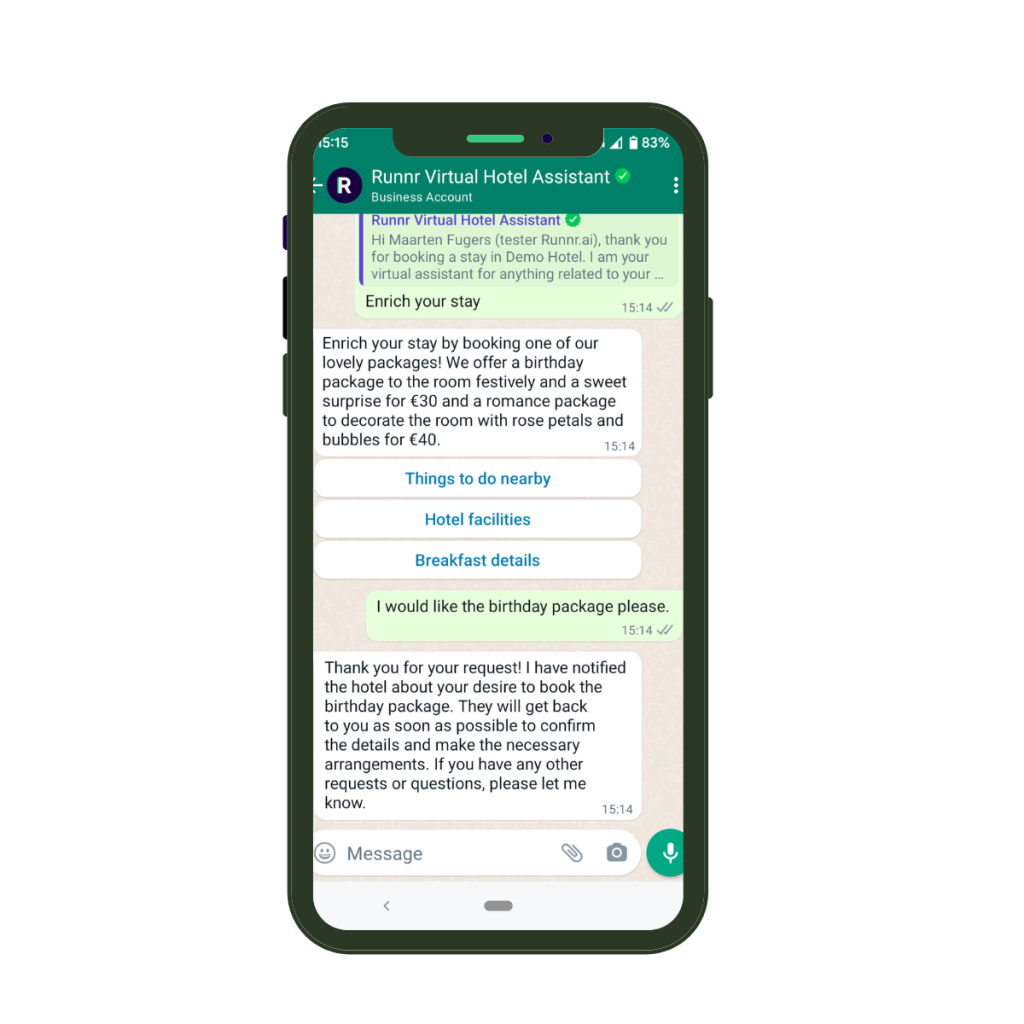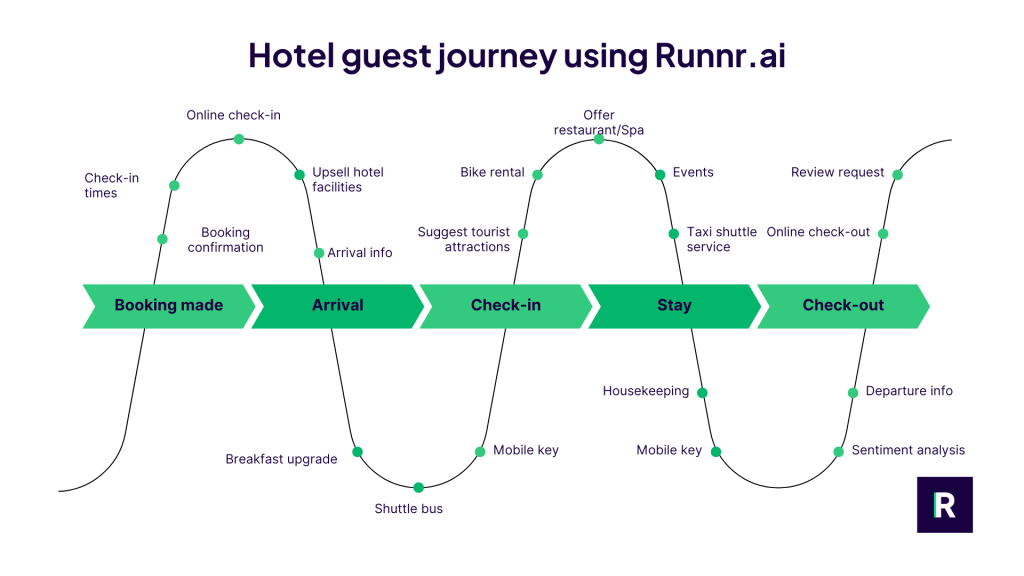Room to Grow: Strategies for improving hotel occupancy rates

Hotel occupancy rates provide insight into the overall health of a hotel business. Improving occupancy rates is crucial for the growth and survival of a hotel. Achieving a high occupancy rate requires good holistic performance, knowledge of your customers, a great pricing strategy, and reputable guest experience. There are various moving parts that need to be addressed.
This article provides tips and tricks, as well as marketing ideas used by hotels, that are proven to be effective ways to boost your hotel occupancy rate.
In this article,
What is Hotel Occupancy Rate?
Hotel occupancy rate refers to the percentage of occupied rooms or units in a hotel. It can be calculated by dividing the total number of rooms available, by the total number of rooms in use. The number of rooms that are unavailable due to maintenance or other reasons is subtracted while calculating. A high occupancy rate is considered a positive outcome. It is a highly important metric for businesses which rent out their properties, and is used alongside Average Daily Rate (ADR) and RevPAR in the hospitality sector.
It is a useful Key Performance Indicator (KPI) to track in order to gain a better understanding of your business.

What is a good Hotel Occupancy Rate?
Any number above 70% is considered a good occupancy rate for a hotel and is above average. However, note that hotel occupancy rates vary depending on location, service, pricing, and other factors.
Monitoring occupancy rates at different times can provide insight into your property’s performance by season (weekends, holidays, festivals, peak or low), demographic, nationality, and more. Such information can be used as marketing insights to increase your hotel occupancy rates efficiently.
How do we increase Hotel Occupancy Rate?
The question of how to increase hotel occupancy is to ask how one holistically operates a hotel efficiently and reputably. Such a question does not have a short, simple answer.
Improving hotel occupancy rates is done via several means including, but not limited to, streamlining the customer journey, upgrading the booking system, improving the administrative procedures, offering personalised packages and promotions, working with local businesses to drive traffic and referrals, and many more.
- Forecast demand; It is an effective and immediate step to take for understanding your occupancy trends. This involves analysing historical data, market trends and upcoming events in the area to predict when there will be peaks and troughs in hotel bookings.
By understanding when demand is likely to be high, hotels can adjust their hotel pricing strategies, marketing efforts and services to attract more guests during these periods.
On the other hand, to increase hotel occupancy during low season, hotels can focus on targeted marketing campaigns, special promotions or events to stimulate demand and fill rooms.
- Partner with local businesses: also generates traffic and encourages referrals, ensuring a steady flow of guests to the hotel. This includes approaching local restaurants to establish mutually beneficial partnerships.
Such partnerships could include offering dining vouchers or packages to hotel guests, which not only enhances the guest experience, but also encourages them to choose the hotel for their stay.
- Identify in-demand amenities as it can inform your business about what your inbound guests are looking for or what attracts them to your property. You may learn what these amenities are by analysing reviews, customer segments, and the most requested amenities at the front desk.
Doubling down on these amenities through social media campaigns, promotions, and offering special packages on in-demand amenities can help your hotel build a steady stream of customers.
- Offer a venue for Meetings & Events as it generates valuable traffic to your hotel, which in turn improves your hotel occupancy rate. By attracting different groups such as weddings, business conferences and reunions, hotels can create tailored packages that include room bookings combined with other services, as such events often come with room blocks. In addition, hosting meetings and events can lead to repeat business.
How AI Can Improve Your Hotel Occupancy Rate
In the evolving landscape of AI technology in hospitality, many of the improvement activities can be implemented and automated in a one-stop solution. Such activities includes,

1. Offering personalised packages and promotions can be a game changer, encouraging guests to return time and time again. Using data-driven insights allows for tailored offers that keep your key customers engaged and foster guest loyalty. AI can identify amenities, local attractions, dining options, and more on-site services that may interest specific customers.
2. Improving online reputation is another critical aspect that AI can help with. Establishing a strong online presence and managing reputation across different platforms is essential in today’s digital age. AI-powered tools, such as Runnr.ai, can automatically send Google review links to guests who express satisfaction with the hotel’s services. This proactive approach helps in garnering positive reviews and managing online reputation effectively.
3. Implementing sentiment analysis algorithms powered by AI can help assess the tone and context of inquiries from their unstructured input, enabling hotels to quickly identify areas of concern or areas where they excel, and segment their customers according to their sentiment using a labelled dataset. By promptly addressing negative feedback and capitalising on positive reviews, hotels can improve their online reputation and attract more guests.
4. Integrating AI into the guest journey can also yield significant advantages for hotels of all sizes. This integration streamlines various aspects of the guest experience, significantly reducing the workload on the front office staff. Tasks such as handling administrative duties or guest inquiries can be efficiently managed, and check-in process optimized, by AI systems, allowing hotel staff to focus on building lasting relationships with guests.
AI, as exemplified by and in the case of the innovation of Runnr.ai, offers powerful tools in one place that cannot be overlooked when it comes to improving hotel occupancy rates via the activities mentioned above. By leveraging Runnr.ai’s technology, hotels can deliver personalised experiences, effectively grow their online reputation, and streamline operations to create a compelling guest journey.
These advancements not only increase guest satisfaction, but also contribute to higher occupancy rates and long-term success in the competitive hospitality industry.
